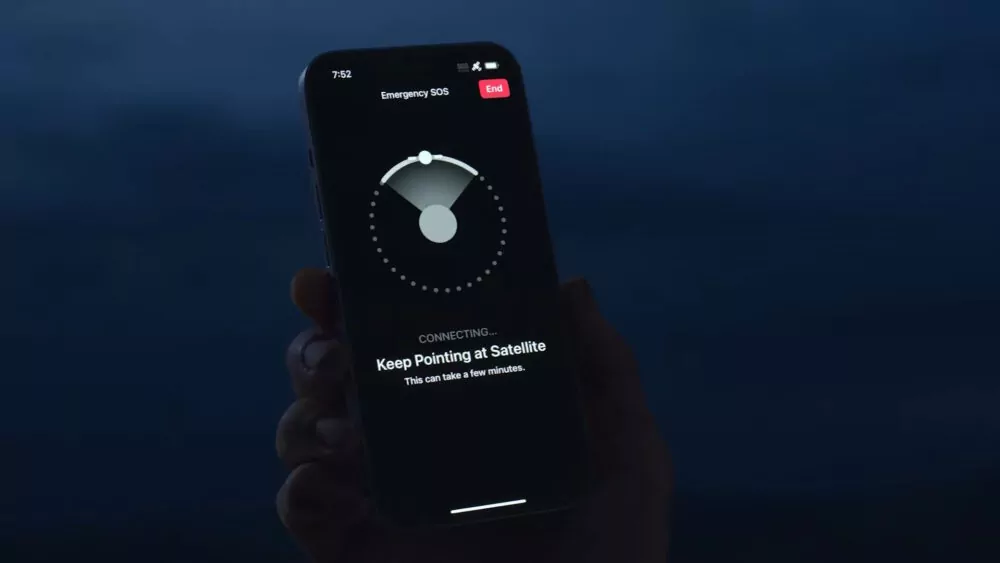
Breaking Barriers: The Impact of Language Translation Wearables on Cross-Cultural Communication
Language translation wearables are devices that provide real-time audio translation between two or more languages. These wearable devices aim to break down language barriers and enable fluid communication between people who speak different languages.
Some examples of popular language-translation wearables on the market today include:
- Google Pixel Buds – Wireless earbuds with Google Translate integration to translate speech in real time.
- Timekettle M3 Language Translator Earbuds – Three-in-One Translator Earbuds with 40 Languages: Forget the clucky handheld translator. It’s a must-have for exploring the world. Timekettle M3 is an all-new translator earbud, Not only is M3 a translator device, but it also supports playing music and phone calls.M3 language translator device supports 2-way translation in 40 languages.
- M8 Translator Earbuds – The wireless language translator earbuds adopt a multifunction touch, which can play music or facilitate answering or rejecting calls. Clear dialogue through noise reduction. 144 Language Translator Device.
- Mymanu MyJibo – Live Voice Translation: Text and speech translation in over 37 languages using MyJuno App – no sharing of earbuds
- WT2 Plus – AI translation earpieces with real-time translation, noise cancellation, and mobile app connectivity. Language Translator Device with 40 Languages & 93 Accent Online.
These revolutionary gadgets utilize speech recognition, machine translation, and natural language processing to allow cross-cultural communication on the go. With the potential to break down language barriers, language translation wearables may have profound social impacts across travel, business, education, and our interconnected global society.
Brief History Language Translation Wearables
The idea of language translation wearables first emerged in the 1970s and 1980s as the concepts of handheld and wearable computers were being explored. However, the technology was not yet advanced enough to make speech-to-speech translation devices practical or accessible.
A major breakthrough came in the 2000s at Carnegie Mellon University’s Language Technologies Institute. Researchers developed early prototypes of portable devices that could translate conversations between English and Spanish speakers in close to real-time. This helped pave the way for commercial products.
In 2014, the Pilot earpiece launched on Kickstarter, offering translating capabilities between English, Spanish, French, and Italian. The crowdfunding campaign brought wearable translation into the mainstream.
Other key innovators include Travis, who debuted the Travis Touch language translator in 2016, and Google with its Pixel Buds earphones released in 2017. These products demonstrated the expanding potential of translation wearables.
Major tech companies like Microsoft, IBM, and Facebook have now invested in developing their own translation devices as the market continues to grow. The rapid evolution of voice recognition, machine learning, and artificial intelligence is making translation wearables more powerful and accurate.
How They Work
Translation wearables contain several key components that enable them to convert spoken words between languages in real time:
- Microphones – Devices such as earbuds have built-in microphones that pick up the wearer’s voice as well as the voices of those around them. High-quality microphones are essential to accurately capture the nuances of speech.
- Noise cancellation – Translation devices utilize noise cancellation technology to isolate voices from background noise. This results in much higher accuracy.
- Audio transmission – The audio captured by the microphones is transmitted wirelessly to either a smartphone or a separate portable module that contains the translation software. Bluetooth is commonly used for this transmission.
- Translation software – Complex artificial intelligence algorithms analyze the audio input and convert it from one language to another. The software leverages massive datasets and neural networks to enable incredibly fast and nuanced translations.
- Speakers/Display – The translated speech is then played back aloud via speakers in the earbuds or a separate module. Some devices also display the translated text.
- Internet connectivity – To access updated software, linguistic databases, and processing power, most translation wearables need to remain connected to the internet via WiFi or mobile data during use. This allows them to provide context-aware translations.
So in summary, tiny microphones capture the speech, noise cancellation isolates the voices, the audio is wirelessly sent to powerful translation software, and the translated speech is played back – all within a fraction of a second. The speed and sophistication of the translation algorithms are what sets modern wearables apart.
Current State of the Market Language Translation Wearables
Language translation wearables have seen growing popularity and adoption in recent years. Major technology companies like Google, Microsoft, and Facebook have all introduced their own models of translation earbuds and headphones. Some of the most popular current models include:
- Google Pixel Buds Pro Released in 2022, Google’s Pixel Buds use Google Translate to offer real-time translation in over 40 languages. Reviews praise their ease of use and call quality.
- Timekettle WT2 Plus These AI-powered earbuds can translate 90+ languages through a companion app. They offer low-latency translation and support for translating in-person conversations.
This model focuses on translation accuracy in noisy environments. It claims to translate up to 40 languages with over 99% accuracy.
The Professional Dictionary Scanning pen is built-in 2.75 mill. words, available for scanning and translation of 116 languages Online & 11 languages offline by scanning or photo translation.
According to one estimate, the smart headphone market is projected to grow from $21.6 billion in 2021 to $31.3 billion by 2026. The rise of remote work and virtual interactions has increased the demand for seamless translation services. As technology continues advancing, wearable translator sales are positioned to keep rising globally.
Benefits for Travel Language Translation Wearables
The most obvious application of language translation wearables is to facilitate travel to foreign countries. With a device that can translate in real-time, language barriers can be eliminated, allowing travelers to freely converse with locals. This enhances the cultural immersion experience, as travelers can connect more deeply with people.
Wearables open up more destinations as viable options, including places where English is less commonly spoken. Travelers can navigate unfamiliar environments more seamlessly by understanding signs, announcements, menus, and more. It reduces the anxiety, frustration, and inconvenience of not knowing the local language.
With live translations, travelers can fully embrace spontaneity. They can confidently accept invitations, decide to join tours or activities, and take detours without being limited by communication. This provides more opportunities for memorable experiences.
Language wearables vastly improve safety for solo travelers or those venturing off the beaten path. If lost or in need of assistance, the translation capabilities ensure travelers can convey their situation. This provides peace of mind.
Overall, by bridging language gaps, translation wearables allow for richer, more enjoyable, and more meaningful travel experiences while also enhancing safety. They make the world more accessible to all.
Benefits for Business
The business world has greatly benefited from advancements in language translation technology. Meetings and negotiations with international partners are far more productive with the help of wearable translation devices.
Real-time translation facilitates clearer communication and better understanding between business professionals who speak different languages. This allows deals and partnerships to progress smoothly, overcoming previous language barriers.
Wearable translators allow multinational companies to conduct efficient global operations. Executives can effectively manage international offices, enabling better collaboration. Sales teams also benefit from strengthening relations with foreign clients.
Negotiations particularly gain an edge with instant, two-way translation. Subtle nuances and precise phrasing in sensitive discussions are conveyed accurately. This builds greater trust and credibility between negotiators.
The portability of modern translation earpieces allows traveling business people to communicate freely abroad. Important meetings with overseas stakeholders no longer require a human translator. This convenience provides flexibility and cost savings.
Overall, wearable translation devices have had a profoundly positive impact on international business activities. Seamless communication across languages is creating a more connected global economy.
Benefits for Education
Wearable translators have opened up tremendous opportunities in the realm of education, particularly for language learning and international exchange programs. Students equipped with real-time translation devices can immerse themselves in foreign environments in a much more meaningful way.
The barrier of language differences is eliminated, creating an inclusive and welcoming learning environment. Students can actively participate in classroom discussions, group projects, and social interactions. This facilitates faster language acquisition through constant practice and engagement.
Study abroad programs are more accessible than ever. The intimidation factor of traveling to a country where you don’t know the language is removed. Students can fully focus on cultural exchange and forming connections rather than struggling to communicate.
Even at home, language students can utilize translation wearables to simulate an immersive language environment. Conversing with the device allows opportunities to practice conversational skills and gain confidence. Teachers can also incorporate the technology into lessons to aid instruction.
Overall, by breaking language barriers, these wearable devices enrich educational experiences and allow students to reap the full benefits of language learning and cultural exchange. The potential to accelerate language acquisition and make global experiences more inclusive is incredibly empowering.
Criticisms and Concerns
As with any emerging technology, language translation wearables also face criticisms and concerns that are important to consider:
Accuracy Limitations
- Machine translation still has room for improvement in accuracy, nuance, and contextual understanding. Wearables rely on AI, which can misinterpret slang, jokes, culturally specific references, and more.
- Results may be rough or unreliable for less common languages or specific dialects. The technology focuses on languages with the most commercial demand.
- Longer, more complex dialogue proves challenging versus short, simple phrases. Rapid back-and-forth discussion can confuse the devices.
Privacy Concerns
- Some fear wearables like smart glasses with cameras could enable recording without permission. This raises privacy issues and ethical concerns.
- There are questions about how user data will be stored, accessed, and leveraged by companies. More transparency is needed.
Distracted Interactions Language Translation Wearables
- Over-reliance on wearables could lead to distracted conversations, less engagement, and missed social cues. The technology should enhance, not replace, human interaction.
- Constant translation in your ear may hinder directly conversing in a foreign language. Less incentive remains to improve language skills.
The Future Language Translation Wearables
The future looks bright for translation wearables as the technology continues to improve. Here are some ways these devices might develop further:
- Increased accuracy. As translation algorithms leverage more data and research, the output should become more precise and natural-sounding. This will lead to smoother conversations.
- Support for more languages. Right now, most devices only work for common languages like English, Spanish, French, etc. Expanding to lesser-spoken languages will make the devices useful to wider audiences.
- Enhanced voice recognition. Devices will get better at understanding different accents and speech patterns. This will help in noisy environments.
- More wearable form factors. Glasses, watches, jewelry, or clothing integrated with translation could become mainstream. This will allow broader, seamless integration into daily life.
- Real-time translation of lectures, conferences, etc. Wearables may advance enough to provide live translations of speeches, lectures, plays, and more. This would vastly expand access to information.
- Bidirectional communication. Future devices might allow smooth back-and-forth conversation rather than one direction at a time. This could enable a more collaborative dialogue.
- Connectivity features. Translation wearables could integrate with smartphones, internet access, virtual assistants, and more. This expands their capabilities.
- Price reduction. As the technology matures, costs are likely to decrease, making translation wearables more affordable for wider audiences. This will increase adoption.
The possibilities are exciting. In years to come, translation wearables may become so advanced that language barriers will disappear leading to greater cultural understanding. However, achieving that future will require continued innovation and responsible development.
Conclusion Language Translation Wearables
The development of language translation wearables has had a profound impact on cross-cultural communication over the past decade. As we’ve explored, these devices utilize advanced speech recognition and machine translation technology to enable real-time translation of spoken languages.
Key points we’ve covered include:
- How translation wearables have evolved from bulky devices to more discreet earbuds and glasses
- The ability for travelers to immerse themselves in foreign countries and communicate freely
- Business benefits such as removing language barriers for meetings, negotiations, and international teamwork
- Educational applications like exchange programs and language learning
- Concerns around inaccuracies, privacy, and over-reliance on technology
Looking ahead, translation wearables will likely continue to advance alongside improvements in artificial intelligence. Devices are expected to become even more compact, accurate, and multifunctional. Widespread adoption could enable people worldwide to connect with and understand each other like never before.
The coming years will determine if these technologies fulfill their potential to break down linguistic and cultural barriers. However, the pace of progress so far indicates that translation wearables will play a key role in the future of cross-cultural communication and globalization.











